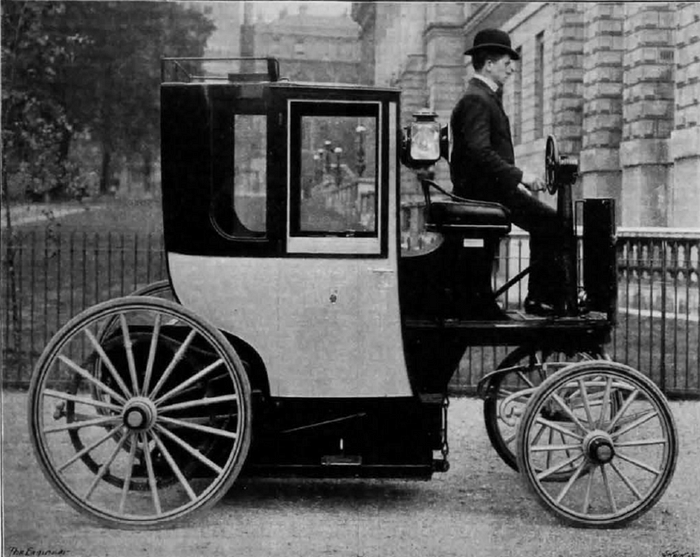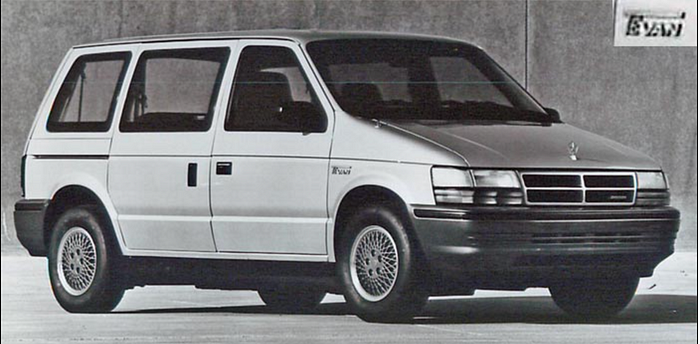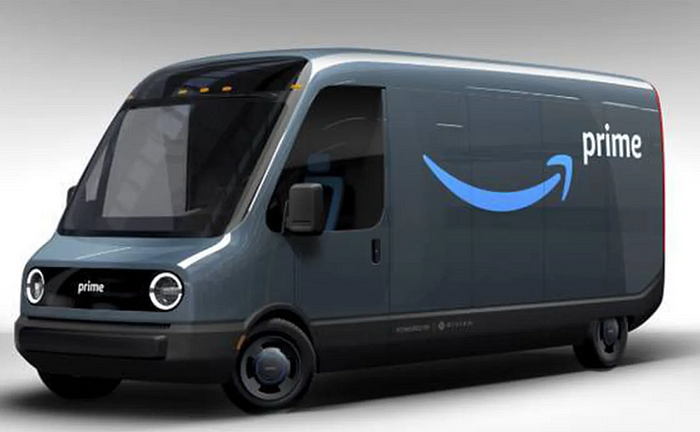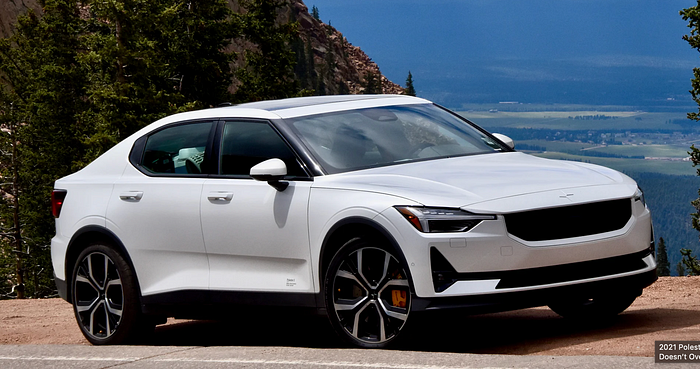🚗⚡ Tesla before Tesla? The forgotten story of the EV1. The car that changed everything and then disappeared
The electric vehicle (EV) revolution is not a recent phenomenon. The story of EVs dates back to the late 19th century, and it is filled with fascinating twists and turns. One of the most intriguing chapters in this history is the rise and fall of the EV1, the first modern electric car produced by General Motors (GM) in the mid-1990.

General Motors EV1: The Early Days of Electric Vehicles
Electric vehicles were not always a rarity on the roads. In fact, they were quite common in the late 19th and early 20th centuries. The first electric-powered wagon was patented by Thomas Parker in 1884, followed by the first true EV manufactured by German innovator Andreas Flocken in 1888. These early EVs were preferred over gasoline-powered cars due to their smooth operation and quietness.

The first American EV company, Morris and Salem Electric Carriage and Wagon Company was founded in 1894, and by 1897, electric taxis were common on the streets. The industry was flooded with EV innovation over the next decade, with vehicles capable of traveling at speeds of 20 miles per hour and covering 25 miles on a single charge. However, the advent of the muffler and electric starter, along with the discovery of massive crude oil deposits globally, led to the decline of EVs by the mid-1910s.


The 1990s: The Electric Car Revolution
The 1990s saw a resurgence of interest in EVs due to rising pollution levels, especially in Los Angeles, which had higher pollution levels than all other states combined. This led to policymakers pushing for lower-emission vehicles.
One notable development during this time was the introduction of the Zero Emission Vehicle (ZEV) mandate in California. In 1990, the California Air Resources Board (CARB) adopted the ZEV mandate, which required automakers to produce a certain percentage of vehicles with zero emissions. Initially set at 2% of vehicle sales by 1998, the mandate gradually increased over time, with the goal of phasing out petrol-fueled vehicles entirely.
Automakers' Response: The Chrysler TEVan
Automakers had to adapt to these new regulations, and some companies took the opportunity to enter the EV market. Chrysler was among the first to respond, introducing the TEVan, an electric minivan, in 1993. While the TEVan had a limited production run due to low consumer interest, it represented a step toward a greener future.

The Impact & The EV1: Major Steps in EV Innovation
However, the most significant development of this time was the introduction of The Impact by General Motors at the 1990 LA Auto Show.

The Impact was a sleek, modern-looking electric vehicle that could reach impressive speeds of 180 miles per hour. 183.822 mph to be exact, a record for “street legal” EVs that held up until 2016 when it was topped by a battery-powered Corvette at 205.6 mph.
Although it never made it to showroom floors, it paved the way for the first real contender for the mainstream EV market: the EV1.

EV1: Features and Specifications
- Powertrain: The EV1 was powered by a three-phase AC induction motor, capable of producing 137 horsepower and 110 lb-ft of torque.
- Battery: The first model of the EV1 used lead-acid batteries, later replaced with more advanced Nickel-Metal Hydride (NiMH) batteries in 1999. The range varied depending on the type of battery used.
- Charging: The car used a specially designed Magne Charge inductive charging paddle for recharging, a distinctive feature at that time.
- Aerodynamics: The EV1 was highly aerodynamic with a drag coefficient of 0.19, one of the lowest of any car at the time.
- Interior: The EV1 was a two-seater with a compact hatchback design. It had features like keyless entry, electric power steering, and an advanced onboard computer system.
Charging Up: The Highs of the EV1
- Innovation: The EV1 was a pioneer in electric vehicle technology and laid the groundwork for future electric vehicles.
- Performance: Despite being an electric vehicle, the EV1 offered good performance and acceleration, comparable to gasoline cars of the time.
- Efficiency: The EV1 was highly efficient and had a very low environmental impact compared to gasoline-powered cars.
Powering Down: The Lows of the EV1
- Limited Range: The range of the EV1, especially with the earlier lead-acid batteries, was limited. This, combined with the lack of charging infrastructure, led to “range anxiety.”
- High Cost: The cost of producing the EV1 was high, and the lease rates were also high compared to conventional vehicles.
- Limited Seating: The EV1 was a two-seater, which may have limited its appeal for families or those needing more passenger space.
- Availability: The EV1 was only available in a few markets (primarily California and Arizona), and only on lease, not for outright purchase.
The Rise and Fall of the EV1
In 1996, General Motors built upon the lessons learned from The Impact to produce the EV1. The EV1 was powered by lead-acid batteries and boasted a range of 70 to 100 miles. The arrangement was to lease them to the public, but with a specific clause that disallowed the option of ever owning the car outright.
The rationale behind this unusual decision was multifaceted:
Regulatory Compliance: The EV1 was primarily developed in response to the Zero Emission Vehicle (ZEV) mandate implemented by the California Air Resources Board. The mandate required automakers to produce and sell a certain percentage of zero-emission vehicles in California. By leasing the EV1s instead of selling them, GM retained ownership of the vehicles and could ensure they remained zero-emission, helping GM stay in compliance with the mandate.
Control Over Technology: At the time, electric vehicle technology was still nascent and evolving. By retaining ownership, GM could control how this proprietary technology was used and maintained, and could also recall the vehicles for upgrades as new battery technologies became available.
Resale and Maintenance Concerns: Electric vehicles require different maintenance than traditional gasoline-powered vehicles, and GM may have been concerned about the costs and logistics of supporting a fleet of EV1s in the hands of individual owners, especially given the relatively small number of EV1s produced. Similarly, the resale value of used EV1s might have been unpredictable, given the newness of the technology and the limited market.
The EV1 was a massive hit, praised for its speed, high-tech accessories, and received the level of hype that would only be later seen by Tesla. However, this success was short-lived. Despite the growing demand for EVs, General Motors shut down the EV1 assembly line in 2001, citing insufficient interest.
The End of the EV1 and the Aftermath
In one of the strangest choices ever made by an automaker, when the EV1 leases ended, the company refused to renew the agreement and rejected offers for the customers to buy their cars outright. Nearly all the EV1s produced were reclaimed by GM, shipped out of state, and destroyed in a desert location in Arizona. In this remote desert setting, away from the public eye, these pioneering vehicles were systematically crushed and shredded.

This decision became one of the most controversial moves in the automotive industry. Critics argue that the reclaiming and destruction of the EV1 were symbolic of corporate and political resistance to mass-market electric vehicles.
Famous EV1 Drivers
Among those affected by GM’s decision were a handful of Hollywood celebrities and prominent figures who were known to be enthusiastic drivers of the EV1. Notable among them were:
Tom Hanks: The Oscar-winning actor was not only an EV1 driver but also an outspoken fan. He once remarked on the “Letterman Show” about the impressive speed and lack of maintenance the EV1 required.
Mel Gibson: The actor and director was also a notable EV1 leasee, demonstrating the appeal of the EV1 to high-profile individuals.
Alexandra Paul: The “Baywatch” actress was not only a driver but also an activist for the EV1, even getting arrested during a protest against the crushing of the EV1 vehicles.
Their voices joined many others in expressing disappointment and frustration at the discontinuation of the EV1 program, making the event one of the most debated chapters in the history of electric vehicles.

The biggest question still remained: why was this happening? Why did a manufacturer like General Motors, who had spent nearly a decade and over a billion dollars working towards an electric revolution, turn against the cause? The answer lies in a combination of factors, including profit-driven motives, political interference, and the influence of oil companies.
Profit-Driven Motives
One explanation for GM’s decision to halt the EV1 project is that the company never believed that the EV would be a profitable venture and planned for it to fail from the beginning.
For most car manufacturers, a significant portion of profits doesn’t come from the sale of vehicles themselves but rather from after-sale services. Regular internal combustion engine cars require ongoing and sometimes costly maintenance — oil changes, transmission servicing, brake system overhauls, and engine tune-ups, to name a few.
Additionally, parts replacement contributes significantly to the revenue stream. Items like timing belts, water pumps, exhaust systems, and many other components often need to be replaced during a vehicle’s lifetime. All of this maintenance and parts replacement accounts for a significant percentage of profits for car manufacturers.
The EV Advantage and Threat
Electric vehicles, like the EV1, however, require very little ongoing maintenance compared to their gasoline-powered counterparts. Electric motors are simpler, with fewer moving parts, which significantly reduces the potential for part failures. They don’t require oil changes, and their brake systems tend to last longer because of regenerative braking, a system where the electric motor slows the car and recharges the battery simultaneously.
When GM and other traditional automakers realized the longevity and low-maintenance needs of EVs, this could have been seen as a double-edged sword. On one side, it was a selling point for customers — lower running costs over the life of the vehicle. But on the flip side, for the manufacturer, this meant less revenue from the lucrative service and parts business.
Political Interference
Political interference also played a significant role in the downfall of the EV1. When automakers faced the state of California during a court case over emission mandates, there was evidence of direct interference from the government. President George W. Bush’s administration supported the removal of all mandates, and his chief of staff, Andrew H. Card Jr., was once the chief lobbyist for GM and led the Auto industry trade Association in opposing the mandates when they first came into effect.
Influence of Oil Companies
Oil companies, fearing the loss of their product relevance in an increasingly electric world, were also instrumental in the downfall of the EV1. They heavily involved themselves in the early protesting against the California mandates and took out ads in significant newspaper publications contesting the effectiveness of EVs in an environmental sense.
Electric Vehicles Today: A Resurgence of Innovation and Promise

Fast forward to the present day, and the landscape of electric vehicles has radically transformed. No longer the fringe elements they once were, electric vehicles have moved into the mainstream, fueled by rapid technological advancements, growing environmental consciousness, and supportive government policies.
The global electric vehicle market size reached $205.58 billion in 2022 and is projected to grow at a compound annual growth rate (CAGR) of 23.1%, reaching an estimated $1,716.83 billion by 2031. Amidst this rapid growth, Tesla has emerged as a dominant player, with its influence extending globally.
Tesla’s success has not only boosted its own fortunes but also played a crucial role in promoting the popularity of EVs in the United States and around the world.
Lucid Motors, another American automotive company specializing in electric vehicles, has made waves with its Lucid Air, a luxury electric sedan known for its long-range, fast charging times, and high-end comfort.

Rivian is an American electric vehicle manufacturer and automotive technology company. It was founded by R.J. Scaringe in 2009 and is headquartered in Plymouth, Michigan.
Rivian focuses on producing electric trucks and SUVs, with its first two major models being the R1T, an all-electric pickup truck, and the R1S, an all-electric SUV. The vehicles are notable for their off-road capabilities, long electric range, and high performance.

In addition to their consumer vehicles, Rivian also has a contract with Amazon to produce 100,000 all-electric delivery vans by 2030.

The Polestar 2, from Volvo’s electric performance brand Polestar, stands out for its minimalist Scandinavian design, practicality, and commitment to sustainability, offering a fully vegan interior. I was fortunate enough to be able to have a Polestar as a rental for a trip in my wife’s home state of Michigan and must say it was one of the nicer vehicles I have ever been in. The car drove smoothly even in the snow, the windshield was crystal clear and felt like I was watching Michigan from a high pixel-density screen. It felt luxurious and had a beautiful yet minimal interior like I had never seen before.

Car-sharing platforms like Turo have also played a role in popularizing electric vehicles by making them more accessible to a wider audience. Rental companies and ridesharing platforms are playing an increasingly prominent role in the transition to electric vehicles.
This shift is not only eco-friendly but also offers a unique opportunity for more people to experience the benefits of EVs firsthand. A close friend of mine was able to book a Tesla Model S on the Turo platform within a day's notice and bought one soon after his 3-day rental.
He got to live with it for a few days and was sold on the idea of being a Tesla owner. Experiences like this can be a powerful catalyst for change, influencing people’s perceptions of EVs and potentially leading them to consider purchasing an EV in the future as it did for my friend.

Founded by CEO Andre Haddad, Turo is a peer-to-peer car-sharing company where individuals can rent out their vehicles when they’re not using them. Haddad himself is a proud owner of several electric vehicles and is known for his commitment to environmental sustainability. He even hosts some of his own vehicles on the Turo platform. Including his Lucid Air. Yes, you read that right, you can take the CEO’s car out for a spin.

Lyft has made an ambitious commitment to reach 100% electric vehicles on its platform by 2030. This is expected to reduce 16 million metric tons of GHG emissions and save up to $10 billion for drivers through the transition.
Uber launched Uber Green On 6/9/2023. Uber Green offers Aussies no- or low-emission rides in hybrid or fully electric vehicles, at no extra cost than UberX. From today, users across Sydney, Melbourne, Brisbane, the Gold Coast, Perth, Adelaide and Canberra can choose Uber Green from the list of options when booking a ride in the Uber app. This is a key milestone in Uber’s commitment to become a zero-emission platform by 2040.
Hertz is determined to move forward with its EV transition. The company expects EVs to represent “more than 30% of its fleet by the end of 2024” and is focusing on the corporate market, which sees EVs as a quantifiable way to reduce their greenhouse gas emissions and meet net-zero goals. Hertz has also launched an education campaign, creating a dedicated area on its website to help educate drivers about EVs.
A significant roadblock for rental & ridesharing companies is the scarcity of EV charging stations. Along with this, there’s a need for training companies’ agents and mechanics on EVs and familiarizing drivers with the differences from operating traditional vehicles.
The transition to EVs will be a marathon, not a sprint. The U.S. rental industry, which buys about one-tenth of auto manufacturers’ new cars every year, will continue to rent out hundreds of thousands of traditional autos for years to come. This is partly due to the challenges of acquiring EVs, particularly amid persistent supply chain disruptions and the shortage of essential computer chips.
The Legacy of the EV1: A Beacon for the Future

The EV1 story is a complex tale of innovation, politics, and corporate decisions. It’s a historical footnote that serves as a tale about how the road to progress can sometimes be hindered by a myriad of factors. Yet, it also serves as a testament to the relentless march of technology and the indomitable human spirit that seeks to push boundaries and transcend limits.
Even though the EV1 was short-lived, it laid the groundwork for the burgeoning electric vehicle industry we see today. As electric vehicles continue to advance, and companies like Tesla, Lucid, and Polestar push the boundaries of what’s possible, the memory of the EV1 serves as a poignant reminder of how far we’ve come and the vast potential that lies ahead.
Its spirit is very much alive in every silent hum of an electric motor, in every zero-emission mile driven, and in every step, we take toward a more sustainable future.
